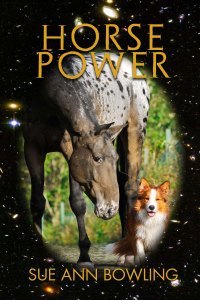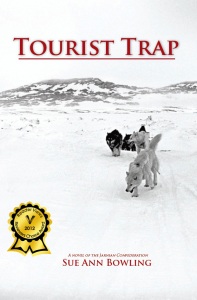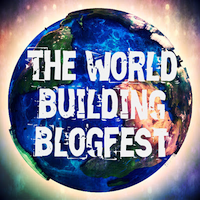I don’t often repeat posts, but with the projection of the world population passing 7 billion this week, I thought it was time to bring this one out again.
Domestication is a mutual process—the plants and animals domesticated historically have met us halfway.
We and our domesticates have entered a kind of symbiosis—both we and they benefit, at least in numbers.
Plant and animal domestication was the first step toward civilization.
There are only two ways of increasing agricultural yield: Increase the amount of food produced per acre, or increase the amount of land farmed.
Once domestication occurred, we were locked into a positive feedback loop between food production and population. But a positive feedback loop is inherently limited and unstable. Are we approaching a crash?
I’ve been taking a Teaching Company course on DVD for the last couple of weeks, and I have to say it’s one of the best I’ve taken so far. I’ve always been interested in the process of domestication, especially since it became clear that the early agriculturists were generally less healthy than their hunter-gatherer ancestors. How did wolves become dogs? Who first thought of riding a horse? Did riding come before or after driving? And are cats really domesticated, or did they domesticate us?
The course is “Understanding the Human Factor: Life and Its Impact” by Professor Gary A. Sojka, but it’s really about human impact. I can’t say it answered all of my questions, or even asked them, but it did a good job of summarizing our current state of understanding, and of steering a middle course between “domestication is a sin and all domesticated animals should be returned to the wild” (most would not survive, and we probably wouldn’t, either) and “animals have no feelings and were put on this world solely for our use.” There are fewer moral problems with domesticated plants and microbes, though even here there are quandaries. How dangerous are monocultures, for instance? Or reliance on a small number of closely related varieties? (Think the Irish potato famine.)
If I have an argument with Professor Sojka, it is that he is too optimistic about the future. This may be appropriate for a college course, but I don’t feel enough sense of urgency. Yes, some people—a small minority even in the West—are beginning to think about long-term sustainability. (The politicians aren’t, by and large.) But the major problem—a population that is rapidly outstripping the carrying capacity of our planet (if it hasn’t done so already)—has become a taboo subject for serious discussion. “The demographic transition will take care of it.” But will that happen soon enough?
Historically, our population has been kept in check by the Four Horsemen of the Apocalypse. Famine. War. Disease. Death by wild beasts—today, accidental death of all kinds. All of these are premature deaths—death by old age simply is not mentioned.
Today, we tend to regard such deaths—those of the young—as particularly tragic. We fight them in every way we can—and in many ways, we’ve succeeded. What we’ve forgotten is that every person born dies eventually, and to reach sustainability we have to reduce the number of people being born until it balances the number who die. Otherwise the four horsemen will eventually increase the death rate to match the birth rate—or more.
Food and energy both rely on sunlight—the sunlight that falls on the earth today and the sunlight that fell hundreds of million years ago, and is now stored in fossil fuels. I group food and energy for several reasons. Fertilizer. Biofuels. Pesticides. Transportation. Pumping water to where it is needed for crops, in some cases pumping down water that has been in storage since the ice age. All of the advances that have allowed us to hold back that horseman, Famine, ultimately rely on those fossil fuels and fossil water, or plan to replace them with agricultural products. And fossil fuels are becoming increasingly risky to exploit—look at the BP oil spill.
But an increase in agricultural output to match the increase in population means more efficiency—which we are obtaining today largely through fossil fuels—or more land in agricultural production. There is only so much land suitable for agriculture, especially if we want to keep the ecosystem services we depend on going. And one of the oldest causes for war is the desire for more land. Desire for more energy, often perceived as a need, is a rising cause of wars today.
Disease? In part that ties back to our methods of food production, as well. Certainly much antibiotic resistance can be linked to the widespread use of antibiotics in animals, and many diseases that started out in animals have crossed over to human beings. I find it interesting that all of the great world religions, many of them very pro-natalist, trace their origins to early city dwellers. Disease can spread rapidly among city-dwellers. In fact until the last century or two, urban areas were dependent on immigration from the countryside to maintain their populations. Having many children was important to these early city-dwellers—most of their children would die before having children themselves. That’s not true today, thanks largely to public health improvements—but the mindset and the religious imperative remain.
All living things—plants, animals, and human beings—are driven to reproduce. In our case, that deep-seated drive is reinforced by religious and social pressures. We claim we have a right, even a duty, to reproduce. But do we? Not in nature. Nature says the “right” to reproduce must be earned. It’s a lesson I hope we can learn before it is enforced by the Four Horsemen.
This is Post 486. Comment to join the drawing.







 Buy Homecoming from iUniverse
Buy Homecoming from iUniverse















